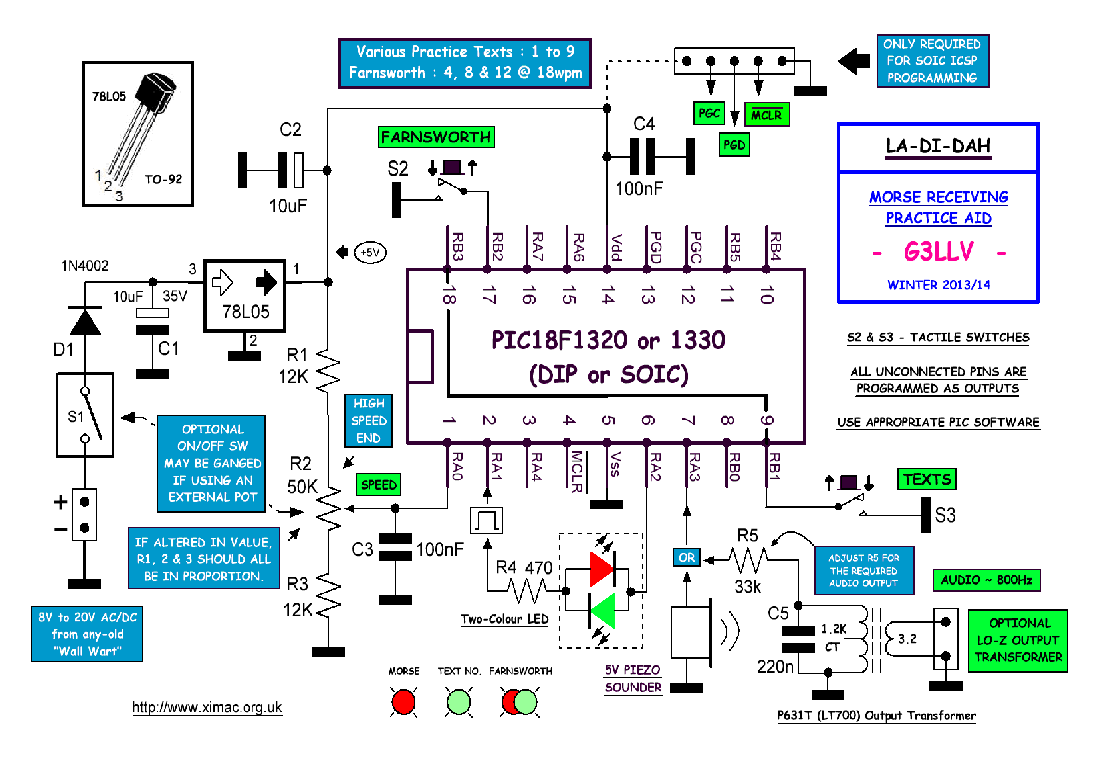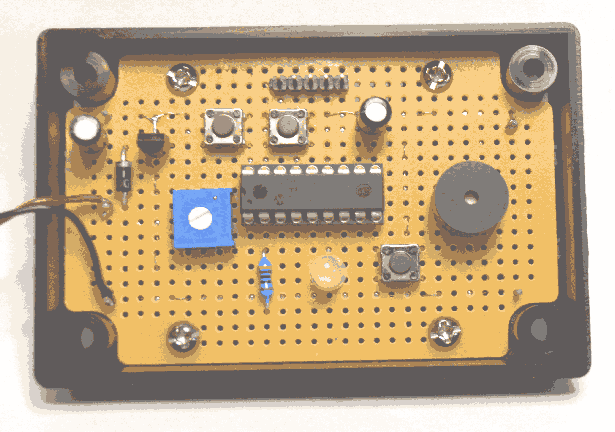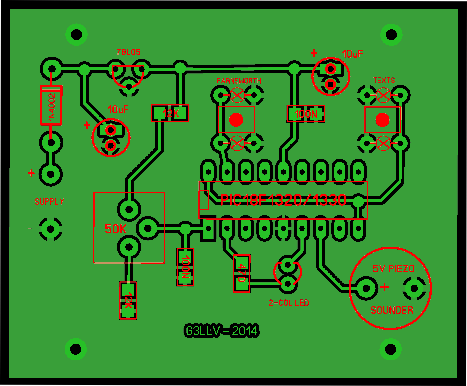



This is for those who would like a small project and to learn Morse independently of a tablet, phone or computer. The board (Vero, PCB or Manhattan) will fit into an Altoids tin and power may be supplied by almost any ‘Wall Wart’. The program and its strings, which takes up almost the whole 8Kb of PIC memory, was written in ‘C’.
Below, at left, is a prototype board to take either the PIC18F1320 or ‘30. Visible are the “Text” and “Farnsworth” switches, the optional ICSP programming header, ‘Speed’ potentiometer, the two-colour LED, 5V piezo-electric sounder and voltage regulator. (Only two of the tactile switches are actually used here). On the right is a PCB layout from Abacom’s “Sprint-Layout60” program with a viewer for it in the accompanying software. PIC chips are about £2.50 ($3.50) and the whole thing should cost around £5 ($7). Note that eBay prices are often more expensive than buying in small quantities from an established supplier.
One of the best ways to learn is to absorb oneself in the code, copying were you are able and not worrying about mistakes. The brain will do its own ‘thing’ eventually and go from counting dots/dashes to automatic decoding.
In my day people who spoke with an affected “posh” accent were often referred to as being rather “La-di-da”. Because of the similarity of this to Morse Code, I have named this device and program thus but with an extra ending of “h” to conform more to the sound it imitates.


MICROCHIP has produced two 18-pin variants of the P18 family that have 8kB of ROM; enough room to hold a reasonable number of text strings. In this device they are converted into Morse and output through a piezo sounder - the LEDs serve as Morse, Text Numbers and Farnsworth Indicators.
Here are the INTEL HEX codes for both chips with a text file in ZIP format -
LDD_1320_V1 - For the PIC18F1320
LDD_1330_V1 - For the PIC18F1330
TEXT NUMBERS
1 - PARIS (For Speed Settings)
2 - Alphabet & Numerals
3 - Random Letters (Spaced)
4 - Random Numerals (Spaced)
5 - Random Call Signs
6 - Abbreviations & Pro-signs
7 - Some QSO Fragments
8 - Forenames
9 - Capital Cities
Although I’m not presenting the source code, I can alter the embedded strings and will do so should anyone need me to.


Shown looking through to the copper side underneath. Resistors and small-valued capacitors are SMD 1206 size.